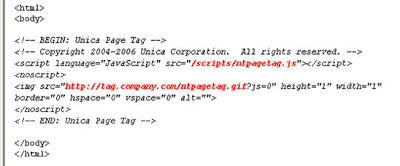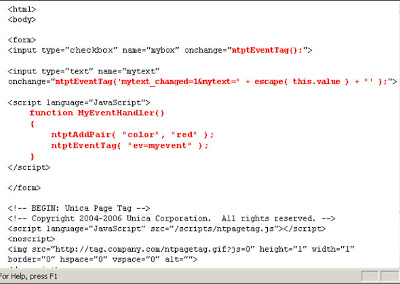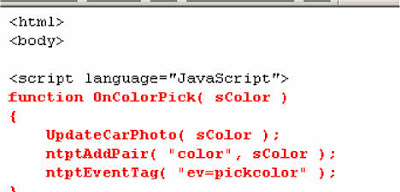Judah Phillips On Rich Internet Apps For Beginners, Part III Of III: Unica
This is Part III of a three part guest post series on how to measure Rich Internet Applications.
Judah Phillips, web analyst for Reed Publications, is joining us here to write about measuring rich internet applications (RIAs). In Part I, he wrote about what is Rich Internet? In part II, he wrote about measuring RIAs with Google Analytics. Tonight, he writes the final chapter, measuring RIAs with Unica. I pulled this into three pieces and so had to edit [see my notes inside square brackets like these] in case you hadn’t already read his other pieces. Plus, I am somewhat comatose after taking the red eye back from Google Analytics training last night, so forgive me if I copy his work upside down. In any case – here is the famous Judah Phillips on measuring Rich Internet:
For those fortunate enough to have made a major investment in Web Analytics, you could [measure rich internet powerfully], if not as simply [as with Google Analytics], and within a much more focused context using a tool like Unica NetInsight. Unica NetInsight is an advanced web analytics tool for cross-channel data integration and current awareness of online behavior and demographics. It’s really neat!Tracking RIA with NetInsight is straightforward; however, you need to page tag. What that means is that you’ll need some basic fluency in web programming or some geeks on your team. I’d recommend that you work with your developers from “phase zero†making web analytics endemic to the site development process. Ain’t that right, Eric Peterson?
A best practice for page tagging is to ensure that you have some way to centrally manage your tags, whether via a content management system (CMS), master template, include file, global footer, universal header, galactic widgetizing optimizer and so on. That way, you don’t have to manage change across the inevitable mess and disorganization caused by hard-coded page tags.
Here’s a glimpse of Unica’s page tag:

To tag a browser “eventâ€, use a javascript function (MyEventHandler) and call the Unica NetInsight function ntptLinkTag() passing the name of the event (myevent) and any values you want (‘color†and “red†in ntptAddPair below), like this:

To track a Rich Internet Application (RIA) event, use the same procedure for tagging a standard JavaScript browser event. You’d call the ntptEventTag API function and pass extra event value information as parameter to ntptEventTag, using the ntptAddPair and ntptDropPair helper functions as necessary. Here’s what I mean:
Using NetInsight to track Flash is little more complicated. First you want to make sure the Flash is published with support for FSCommands. Talk to the geeks to find out. Then, add the Unica Page Tag to the HTML container. Now add the Unica FSCommand command handler logic to HTML. Check it out:

NetInsight enables tagging RIA in FLASH FLEX. First, call the ntptEventTag API function through fscommands. Pass extra event value information as parameter to ntptEventTag. If you want, you can use the ntptAddPair and ntptDropPair helper functions through fscommands. Here’s an example:

So there you have a few examples of measuring events and RIA using various methods in free and not-so-free software. Advanced web analytics stuff isn’t magic, it’s just the application of interdisciplinary concepts in action look magical.To less technical web analysts, all the code may read like science fiction runes and hieroglyphics, but study up on this event tracking stuff for awhile. Ask questions to your geeky friends and colleagues. Contact your vendor (they all should be able to do something like this). Make event tracking and (and event pathing!) part of your web analytics practice and process. Use the data to reconcile engagement measures, understand content effectiveness, and drive user experience and strategy in the Web 2.0 world.


